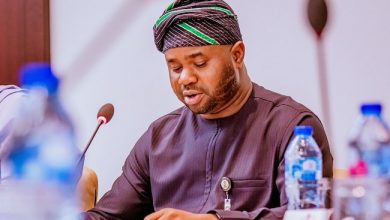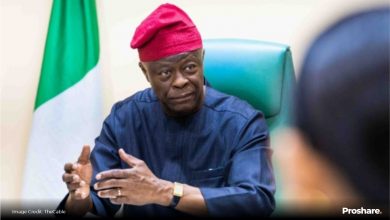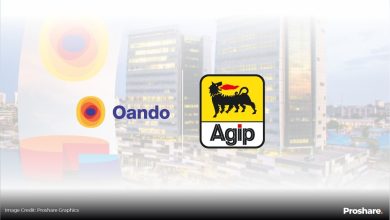FCMB : RETURNS STILL ON WEAK,STUNTED MOMENTUM

When Otunba Subomi Balogun, the banking legend and trailblazer, established First City Monument Bank Plc ,FCMB, in 1982 , it was a model brand on arrival ; one of its core values was to pursue excellence. A lean , fleet footed corporate organization, the bank was nurtured to make a difference with superior service delivery and impressive financial performance from its inception.
But today, it is a different ball game. With stunted steps , cyclical profitability and lethargic speed ,the bank has been overtaken by younger ones miles away . Most importantly, what are raising serious concerns are its returns on investment and profit margins . Both of these are giving some analysts some sleepless nights and the greatest losers are the shareholders.
In terms of value, the market price of the stock is lower when compared to its earnings, making it one of the cheapest stocks in the sector. This is buttressed by its price to earnings ratio, one of the lowest in the sector.
In the same vein, the Tier 2 bank also has a lower dividend yield compared to its contemporaries and has not been able to breach its 52-week high . Investors will rather go with other Tier 2 banks that have better upward trends in price appreciation than getting stuck with low valuation multiples . FCMB market capitalization is less than half of its total equity value
Since the financial turmoil of 2008 , the banking business has proved not to be as usual. Some players have crashed out ,others have their heads barely the waters while few are unhurt kicking impressively .
For FCMB , its trajectory shows it has been a roller coaster of unimpressive performance year after year . The years after the meltdown of 2008 and 2009” up till 2012 were scaring to investors. Between 2013 and 2014 , shareholders hopes were raised ; however between 2015 and 201 8 , the hope crashed again; from 2019 to 2020 the hope resurfaced on the horizon. But is this still not too cold for comfort ? the bank has not hit its 2014 records of N 22billion profit after tax till today .
What is the problem with FCMB ,one of the oldest privately established banks ? Why were the bottom lines remain lethargic and the top lines increasing only incrementally? Its fortunes have been dwindling over years yet its total assets have taken an upward trend within the same time . From N1.169 trillion in 2014 it climbed to N1.621 trillion in 2019 . By its half year 2020 results, its total assets stood at N1.97 trillion and N 2,058, 393 trillion as at the full year 2020
Accusing fingers are being pointed at the founder style particularly for imposing his son at the helm of affairs . This accusation, however, is generating heated controversy among analysts . Those with this view could not be faulted : business climes across the globe is littered with the graves of businesses owned or controlled by children of private individuals behind them . They argued this is the reason why FCMB is merely operating on the treadmill. This management style is not limited to Subomi Balogun .
A similar experiment in the recent time in Nigeria is the rested Diamond Bank acquired by Access Bank . However to some observers ,the fate of FCMB is better . At least the bank is still kicking albeit its uninspiring status against analyst expectations . Both sons of the founders of FCMB and Diamond Bank ,no doubt, are brilliant guys with requisite education and experiences but for the fate of their fathers’ banks , the blame is upon them. . Some analysts ,however, are blaming their unimpressive performances over years on the basis of the resources at their disposal relative to their contemporaries . But the focus should not be on the size of resources but how soundly the bank is run .
Investors are no foool .They seek and entrust their funds in the hands of good resource managers .Moreover, a possession of resources does not guarantee strategic success ;strategic capability is essentially concerned with how these resources are deployed, managed and controlled and in the case of people, motivated ; surely bigness without leverage is obesity ,smallness without leverage is impotence . . But unlike FCMB and Diamond, banks such as GTB and Zenith Bank which did not try that are market leaders today . This is the expectation of some observers and analysts concerning every private initiative like FCMB , particularly when it has become a public quoted company.
Whatever may be the view of any analyst ,one thing is clear , competing for leadership , is a battle of competence ; it is not for dilettantes , not for merely intellectually curious but for those not content to follow, who desire to rewrite the rules of the game ,unafraid of orthodoxy, more inclined to build than to cut , those concerned to make the difference than making career and those who absolutely committed to staking out the future first . These are the leaders who can overcome resource disadvantages and build positions of global leadership , not those more interested in protecting the past than creating the future ,who take industry structure as a given and seldom challenge the prevailing conventions.. FCMB is not yet lucky to get such a leader who can tackle certain issues peculiar of this clime ..
Two issues remain a hard nut for the management of FCMB. These are its inability to lend safely and control costs . Banking management is coterminous with risk monument . When it is said that one is a good or astute banker ,what , in fact ,is meant is that one is a shrewd lender – lending money profitably and safely . Such a banker needs to win the battles of the risks of mismatches between assets and liabilities on one hand and that between the borrowing and lending rates . Inability to control costs is another Achilles heel of FCMB. These are merely symptoms of a laggard. Where senior management has failed to write off its depreciating intellectual capital fast enough and has underinvested in creating new intellectual capital ; a company where senior managers believe they know more about how the industry works than they actually do ,and where what they know is out of date . Where these are in existence , those two issues are the consequences .
Buffeted by above forces only few are seem to be in control of their own destiny. The foundation of the past were shaken and fractured as the industrial terrain changed shape faster than the top management could refashion its basic beliefs and assumptions on which markets to serve ,which technologies to master ,which customers to serve and how to get the best out of employees . Profit Engine of a firm which constitutes the definition of served market, the value proposition put forward to customers, the margin and value added structure, the particular configuration of assets and the skills that yields those margins and supporting administrative systems , is already malfunctioning.
FCMB’s cost to income was 75.4 percent by September 2019 caused by its outrageous overheads . The bank’s returns profile has been constrained by an elevated cost-to-income ratio in the mid-to-high 60% range, and historically high cost-of-risk of 2%. Moreover , high level of debt to equity is another virus .As at June ,2020 its debt equity ratio 190.2 percent standing at N407,995b as against N214,451b equity .Between 2014 and 2019 its debt to equity ratios were 90.3 %, 122% ,128.3 % , 110.4 % , 120.6 % , and 141.4 % respectively. This scenario showed why its cost to income ratios remain among the worst .
Managing risks was tug of war . The bank ,in 2020 for instance, failed to win this with a big amount set aside for impairment or credit loss . Owing to the rising default in loan repayment forced by the Covid-19 pandemic and the declining economy that affected borrowers’ revenue inflow, First City Monument Bank (FCMB) faced an upsurge in credit loss expenses in the third quarter and ultimately in the last quarters. For a long time the bank has been battling with burden of its nonperforming loans which had piled up . In September 2019 alone , it made a N7.8 billion provision as its impaired loans for the financial year ; in September, 2018,it was N14.6 billions. From 2016 , the bank recorded N71.9 billions as its total impaired loans up to September 2019 with N35.7 billions in 2016 alone. The major increase in impairment loss on financial assets did not let all the increase in net interest income get down into profit. Net loan impairment expenses rose by 70 per cent to over N13 billion at the end of September 2020. The expenses claimed nearly 20 per cent of net interest income against 14 per cent in the same period last year .In 2020 financial year , its total impairment stood at N22 billions
. While the bank has continued to battle the prevailing deleterious environment , one constituency served by this bank that is worst hit by its lack-luster performance composed of the shareholders . They are the providers of funds for the business. and the owners too. While the management may give more attention to profitability , to them what matters is what eventually enters their pockets yearly . Their target is adequate returns on their investments ; they keep tabs on the profit margins and returns on their investments .These two key metrics are at their cynosure . The reason for this differential interest may not be far to seek. .A bank could make or register an improvement in profit but necessarily in net profit margins . Also , returns on equity and profit margins mirror how resource or cost efficient every economic agent is and what ultimately becomes investors’ portions . This is the best way to know the true health of a firm ; FCMB has not proved its mettle here .
Its ROAE has been range-bound between low single-digits and 10% since 2015. This metric provides investors with insight into how efficiently the management is handling its money , it measures a company’s profitability in relations to stockholders equity .
The implication of this is that the bank is making less than N1.00 whenever it makes below 10% from every N100.00 equity funds deployed . In the 2020 financial year , it recorded 8.6% just as it was in the preceding year . In September, 2019 its ROAE stood at 5.8 percent when some banks registered double digit with that metric. A half year review shows Return on average equity increased to 9.4% in H1 2020 from 8.2% recorded in H1 2019, this was driven by an increase in net interest margin and FX revaluation. The highest return on average equity was recorded in H1 2016 at 18.3% while the lowest return on average equity was recorded in H1 2017 at 3.3%; it was 10% in 2015 and 6% in2018 .
The bank blamed its poor ROAE in 2019 on its exceptional items . “Our year on year growth has faced a few setbacks due to the non recurrence of exceptional gains from foreign exchange income, regulatory induced fee reductions in the pension business and a continued lull in the capital market”, the bank noted .Some analysts, however, disputed the bank’s claim. According to them ,“as a group , the same struggles were noticed” .The ROAE for the group commercial and retail banking was 7.5 % ; for investment banking, 3.2 % .It was only that of Wealth Management group that stood at 24 %
Its return on average assets, which shows the percentage of how profitable a company’s assets are in generating revenue , increased to 1.1% in H1 2020 from 1% recorded in H1 2019 ; this was driven by an increase in net interest margin and FX revaluation. The highest return on average assets was recorded in H1 2015 at 1.4% and H1 2016 1.4% , while the lowest return on average assets was recorded in H1 2017 at 1.0% . .
Another indicator of efficiency is the bank’s profit margin. As in the above , investors are not excited by its performance in this ratio too. Its pre tax at the end of September 2019 crashed by 13.3 percent and its pretax margin crashed to 9.4% from 11.3% in the corresponding period of 2018 . Its net income margins also backtracked from 8.5% to 7.9% within the same period . At its full year 2019 its pretax and post tax margins stayed at 11% and 9. 6 % respectively . Its pre tax margins stayed approximately at 11% 2020 while its net income margin was 9.8% . The bank’s uninspiring runs over years have continued to suppress both pre tax and post tax margins which are indicators pointing to how well a company manages its financial resources
.
.The travails of this bank hit hard its shareholders. Since that 2014 performance, shareholders have been confronted with the risks of unstable dividend records and high level of non cash earnings . In terms of dividends and capital gains, it has not been a fair experience. In 2014 , a dividend of 25k was declared by the bank per share of 50k . However, the subsequent ones nosedived in response to its plummeting fortunes. A meager 10k was given out between 2015 and 2017 ; in 2018 and 2019 financial years it was 14k apiece . The bank’s dividend yields , the quantum of cash paid out to shareholders relative its market value , were 9.3 %, 14.2 %, 10.8 % , and 7.5 % between 2014 and 2017 . It was 7.2% and 7.5 % in 2018 and March ,2020.
Its Earnings Per Share ,EPS, or earning power , in last five years has been less than N1.00 and mostly below 50k , its nominal price per share . It ranged from 0.98k, in 2020 0.87k in 2019 ,0.75k in 2018 ,0.43k in 2017 to 0.42k in 2016 . To add salts to injuries , the bank retained its earnings heavily against the interest of the investors waiting for dividends .
.But the bank too has its own bitter portion as these investors are not folding their arms . Following the bank’s unimpressive performance in 2015 its investors started fighting back .The trouble started in September 2015 when the bank recorded a N6.4 billions negative quarterly basis. For that year alone its impairment charges stood at N14.4 billions . As at early 2016, their anger became clearer .1ts share price dropped massively by 57 percent by February 2016 and by over 75 percent in relation to its high of N4 in 2015 . By February, 2016 its share traded at 89k .At that 89k in that February the bank traded 43 percent to its book value or at a massive discount of 43 percent to its net worth .
At the end of the week before December 9,2019 , investors who had waited for the bank’s nine months quarterly results struck; the bank end the week as one of the worst losers. Its share lost 9.45 percent of value . The investors were allegedly irked by a N7.8 billion impairment charge provision by the bank .Its share price was down by 29 percent between September 2018 and September 2019 ; it crashed 48 percent from its 2018 high of N3.51k as at September 2019 . Presently , its price earnings ratio is 2.4x as against the market 6.4x and industry 3.4x .; its price to book ratio is 0.2x compared to the banking industry 0.4x Both valuation metrics imply that bank’s stock is trading at discount or under performing the market and its industry .However , while it also implies the investors are willing to part more with money to acquire more of its stock and could be a potential buying opportunity ,its low P/B ratio also means the bank is earning a very poor return on its assets going by the underlying fundamentals .
The environment too is becoming a hard nut and only those that could develop iron teeth could conquer it. The resumption of new lending in 2019 after two years of break, occasioned by the Loan to Deposit Ratio (LDR) policy of the Central Bank of Nigeria (CBN), appeared to have fueled the rising asset losses. In 2019 , the bank grew the customer credit portfolio by 13 per cent and further growth of close to 11 per cent had happened at the end of the third quarter to N793 billion in 2020 . Though ,the bank’s management did all it could to avert strain on asset quality ,FCMB’s asset quality (NPL) ratio deteriorated by 90bps q/q to 4.4% in the third quarter of 2020 due to a spike in NPLs for the oil & gas loan book.
In the financial year 2020 it was the same trend , though the management of FCMB won the battle of interest rates . The bank maintained its earnings growth levers on the upbeat, spurred by a step up in interest earnings . ; Interest income grew at the highest rate in for the bank since 2014. This started from the third quarter . At over N146 billion at the end of the third quarter, gross earnings improved by 7.8 per cent year-on-year, slowing down from over 9 per cent improvement at half-year. This remains the best revenue growth record for the bank in four years against a slight decline in 2019. However this was punctured by non-interest income .Nevertheless, FCMB saw the highest growth rate in revenue in four years in 2020 financial year.
Interest cost extended its benign behaviour in the third quarter with a year-on-year decline stepping up from 3 per cent at half-year to roughly 4 per cent to close at N44 billion at the end of the third quarter. Improving interest income with declining in interest expenses are the favourable combination for FCMB in 2020. The share of interest income devoted to interest expenses went down from 45 per cent to 39 per cent over the review period. The positive effect is a top record growth of 21 per cent in net interest income to N66 billion at the end of the third quarter compared to less than 5 per cent improvement at the end of 2019.
This was sustained in the last quarters of 2020 . Despite the negative impact of covid 19 pandemic economic headwinds on corporate organizations globally , the bank registered a 10% growth in its gross earnings from 181,249B in 2019 to N199,439B in 2020 driven obviously and moderately by increase in its interest income . .It displayed its dexterity in the core business of maturity transforming with a net interest income of N90,758B. in 2020 compared to N75,976B in 2019 , a big jump of 19.5% . Though its interest expense dropped marginally by 2% , what drove the net interest income was a higher growth in its interest income by 9.9 % from N137,447B to N151,023B .
However , this momentum could not be sustained with incomes from non interest transactions of fee and commission down by 5.6% from N20,722B to N19,555B due to high fee and commission expenses of 17.9% .What would have saved the bank in 2020 was a whooping increase in other revenue of 125% to N10,541B from the corresponding year but for a commensurable fall of income from financial instruments by 99.4 % , 49% decrease of other income, 62% increase in impairment from N13,748B to N22,308 B and 42.3% total operating expenses from N76,901B to N84,346B in 2020 were all potential killers or spoilers .
The implications are not hidden , the management ended up destroying values it promises to add ; the impact subsequently impeded the potential impressive growth of the bottom line . Though FCMB is maintaining the path of growing profit for the third consecutive year it has remained well below the peak profit figure of N22 billion attained as far back as 2014. After interplay of forces of incomes and costs handles compounded by high level of impairment , both pre tax and net income margins were suppressed to chagrin of its investors . Gross Earnings grew by 10% to N199bn from N181bn in the previous quarter , profit before tax grew by 8.9% to N21.9bn , profit after tax grew by 31.1% to N19.6bn and net Assets grew by 13.2% from N201bn to N227bn. But despite this progress which the bank is happily promoting ,investors ratios are still too cold for comfort .
In the course of last year , its liquidity buffers have come under severe strain (Q3 ’20 liquidity ratio of 33.5% vs 30% regulatory minimum) due to discretionary debits for CRR by the CBN. However, the bank’s liquidity position was later strengthened by the CBN’s securitization of banks’ excess cash reserve via its special bills.
FCMB is not folding arms. As indicated above , every bank serves five constituencies including depositors, borrowers, regulatory authorities, communities and the shareholders. Only the last are complaining , the rest are well served . However , the management may need to fight against growing impairment and its cost to income ratio which remains very outrageous. The balance sheet mending efforts have recorded relative successes, especially in a harsh economic environment. The bank’s capital adequacy ratios are 17.9% higher than the regulatory required 15%. Liquidity ratio is also at 39.8% and the loan to deposit ratio at 73.9% (CBN loan to funding ratio is 57.36%). Its romance with the digital banking is believed to be yielding results. .The Bank retained the key strengths of growing revenue, moderating interest expenses and improving profit margin and stay the course of rebuilding profit for the third straight year in 2020.






